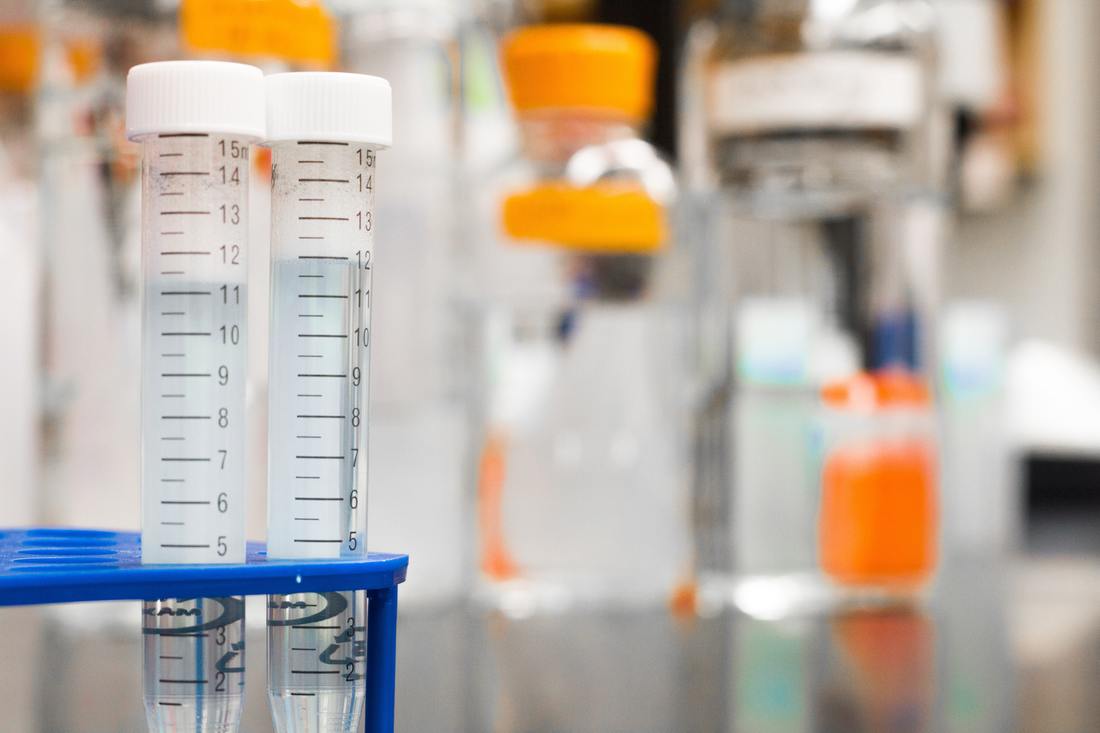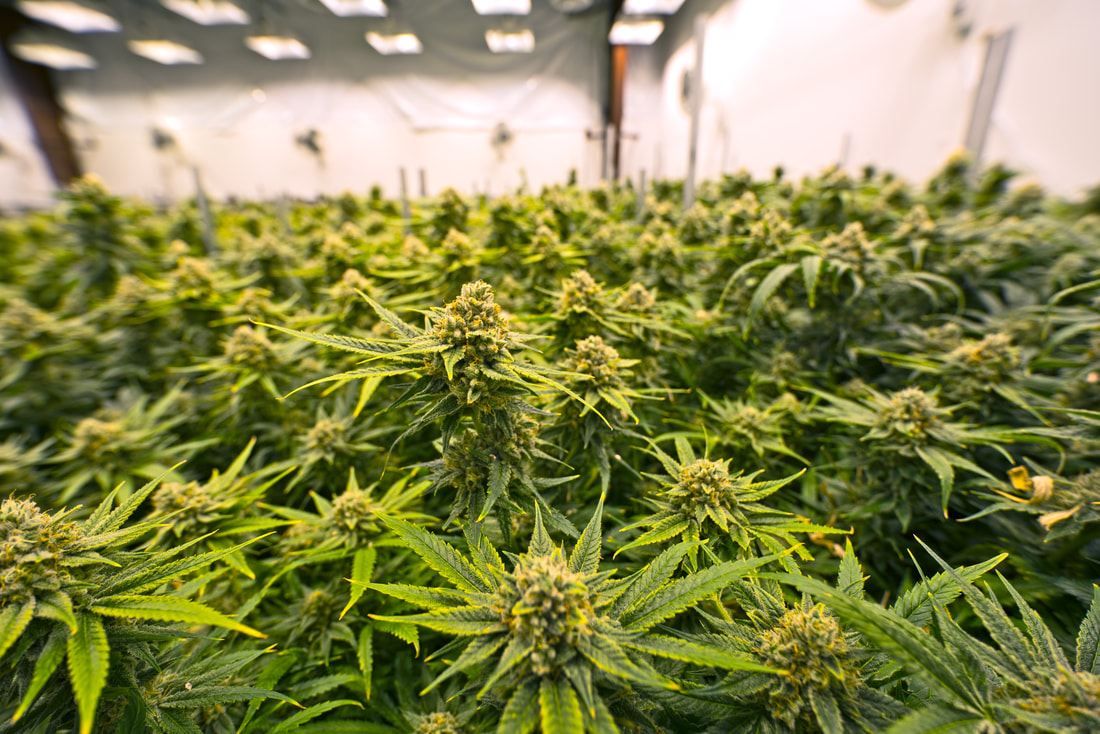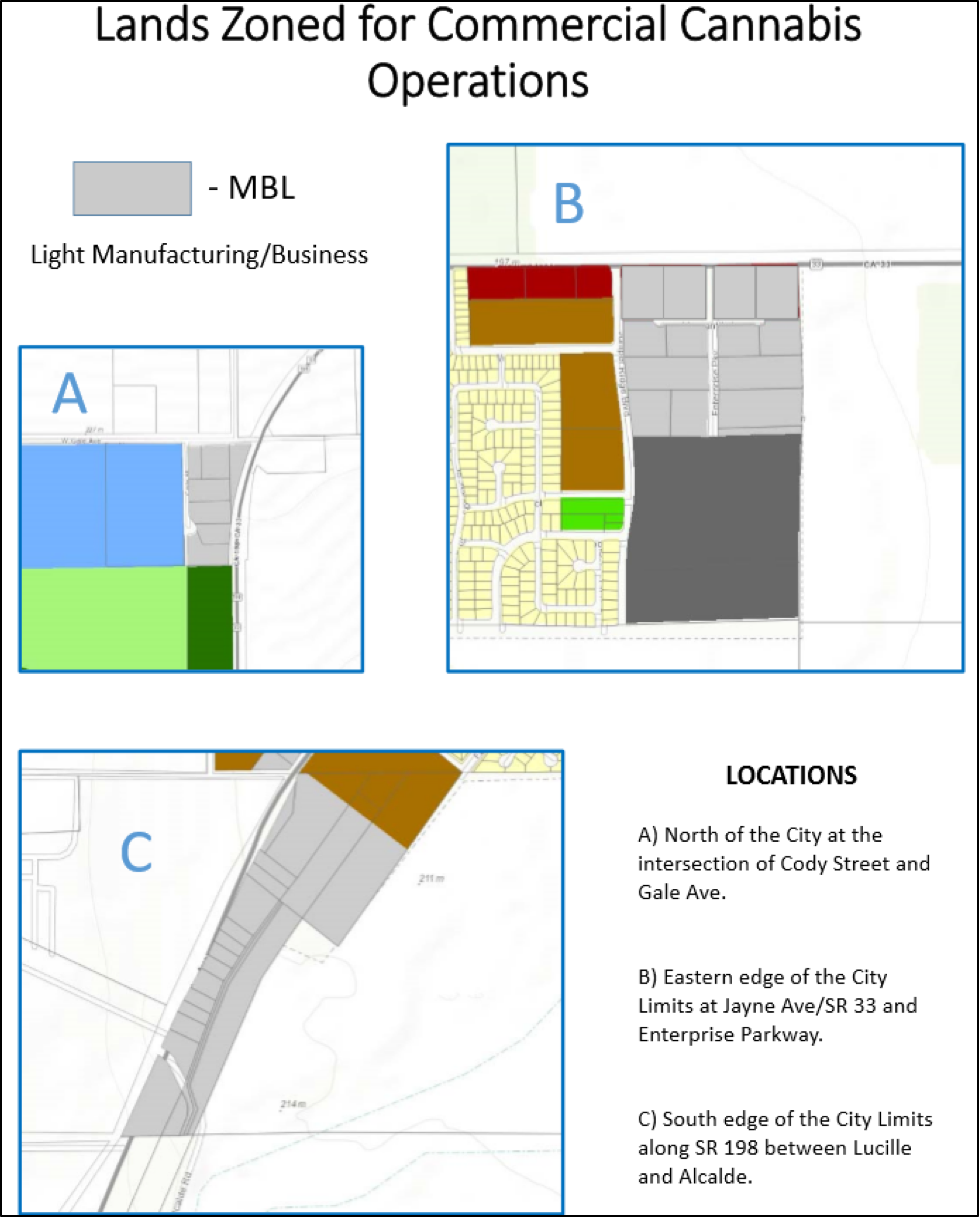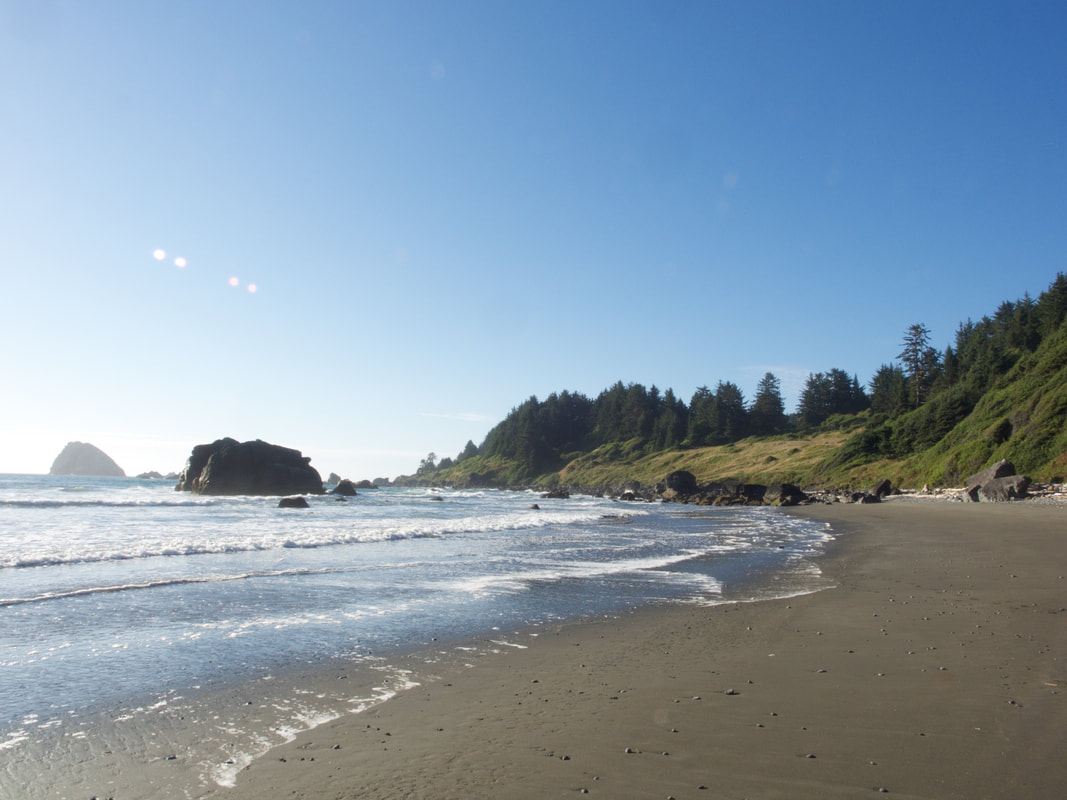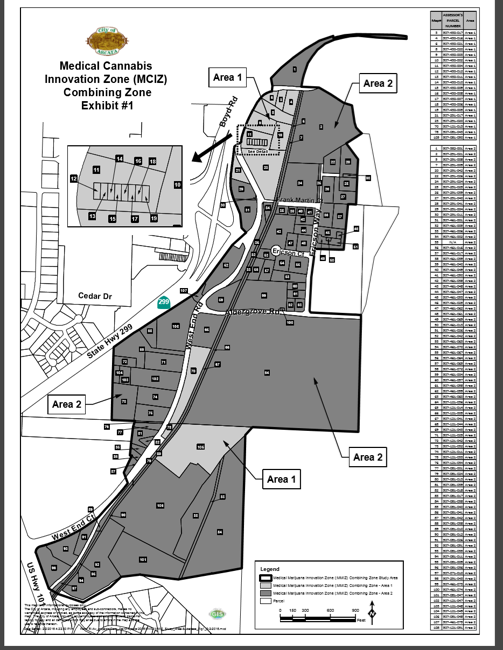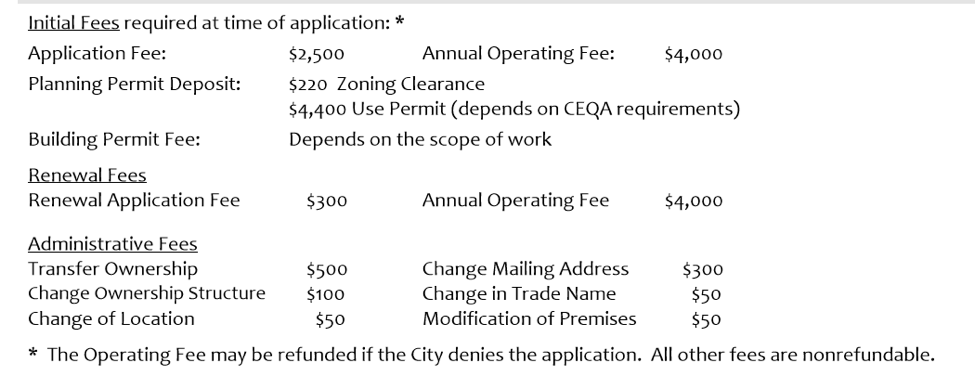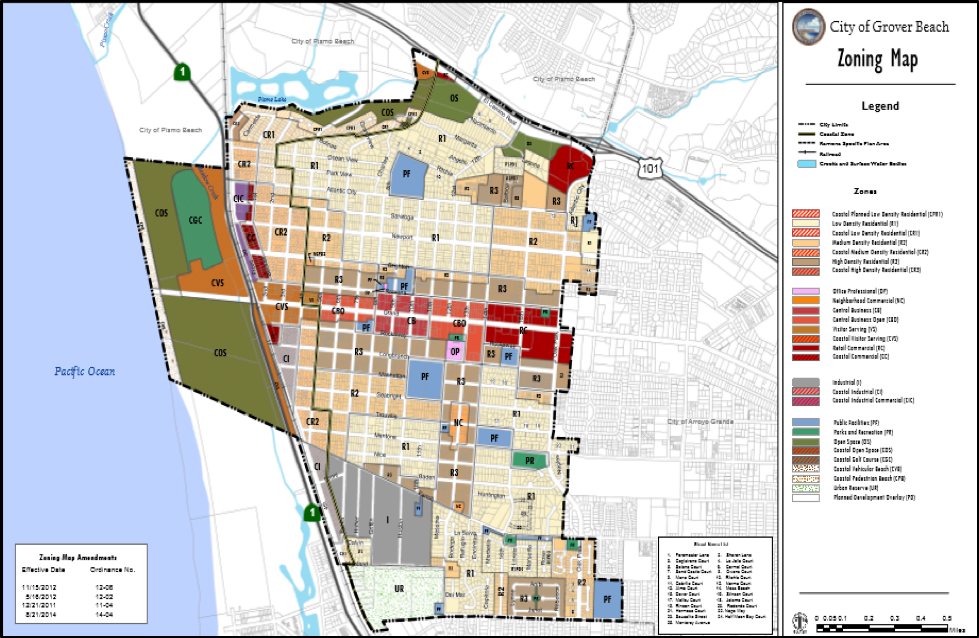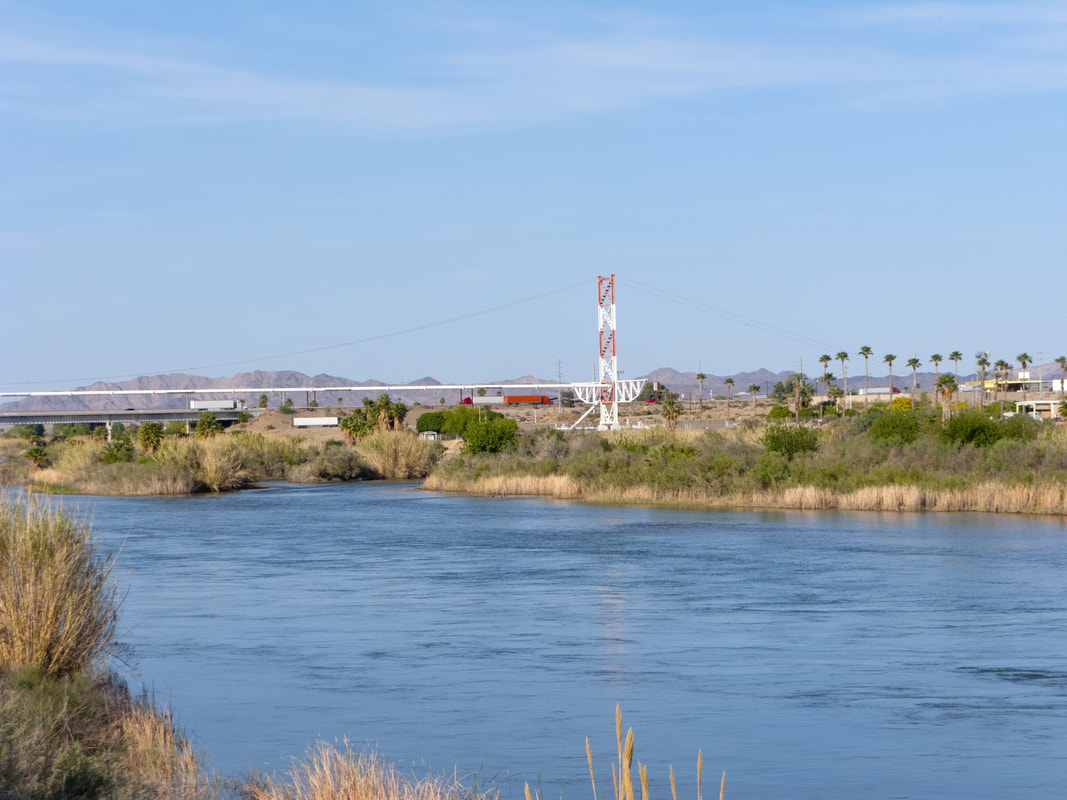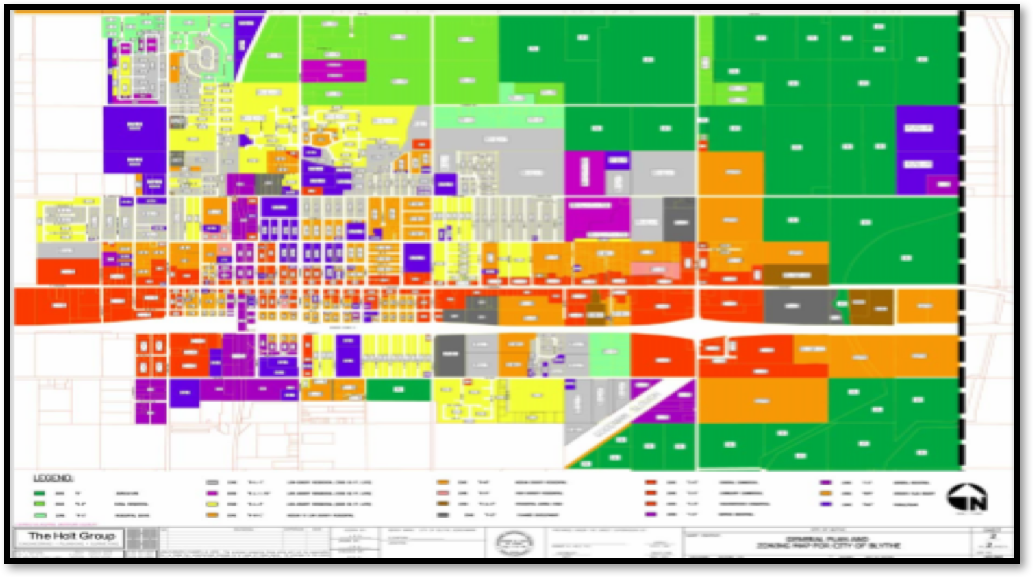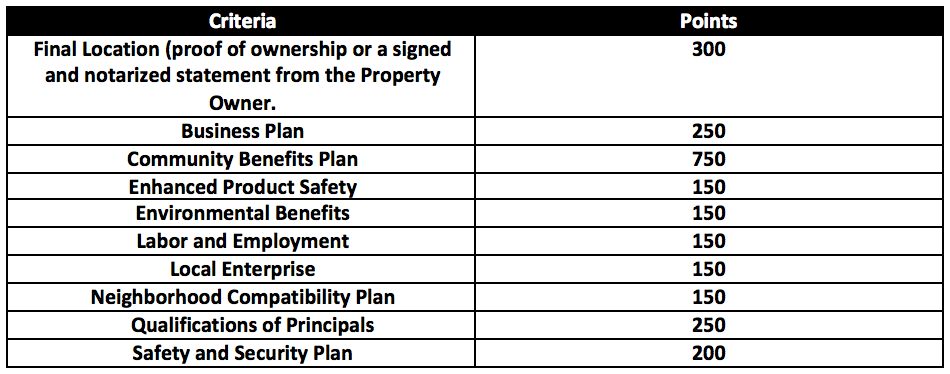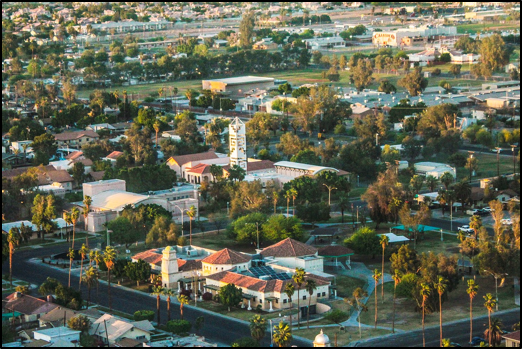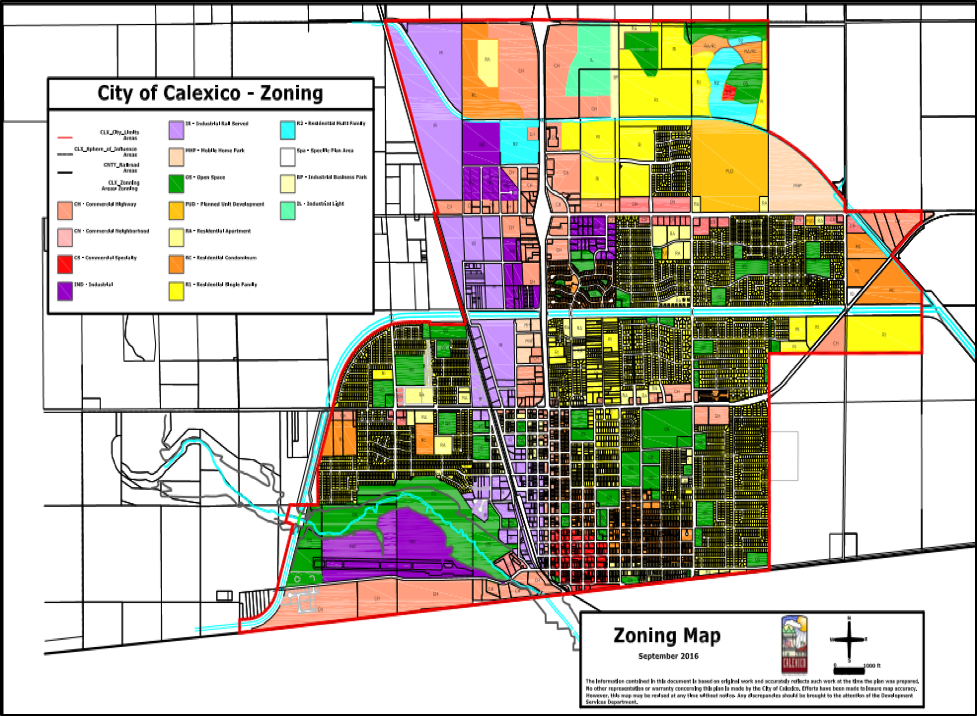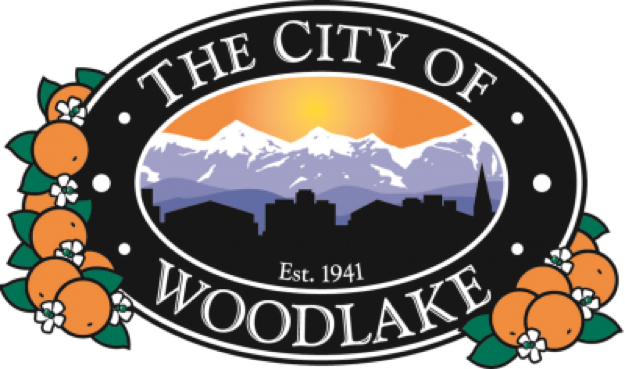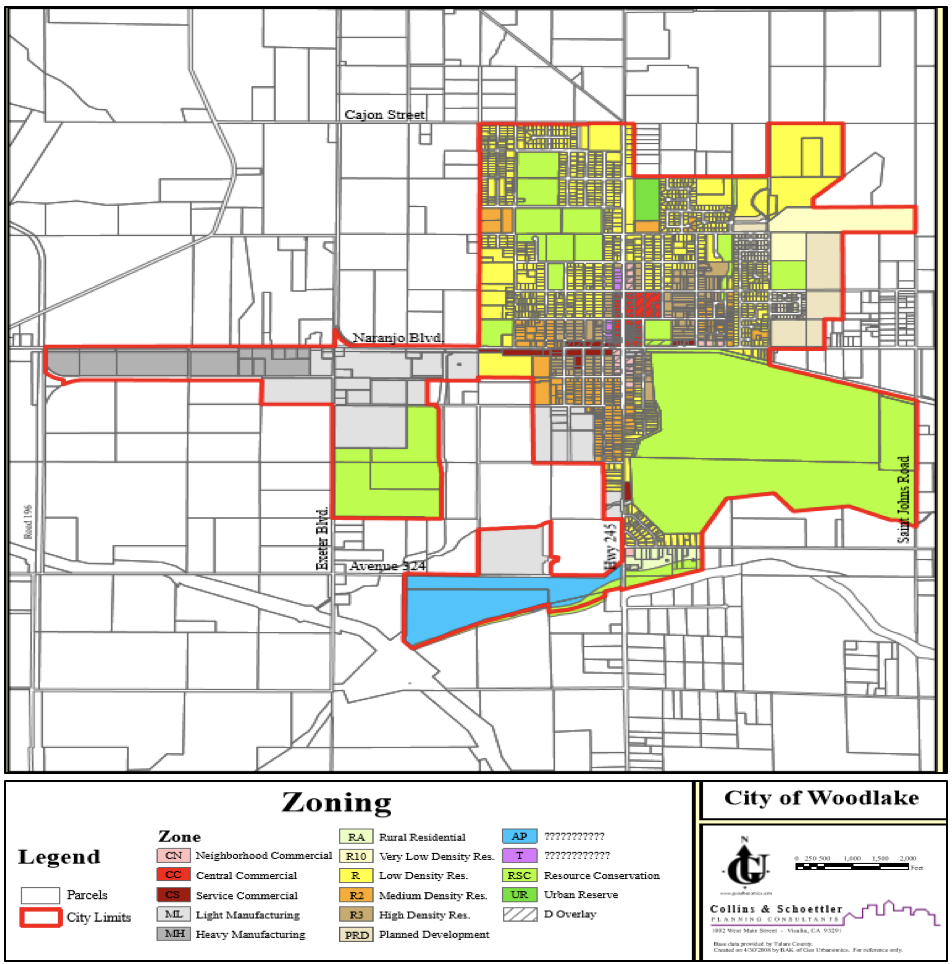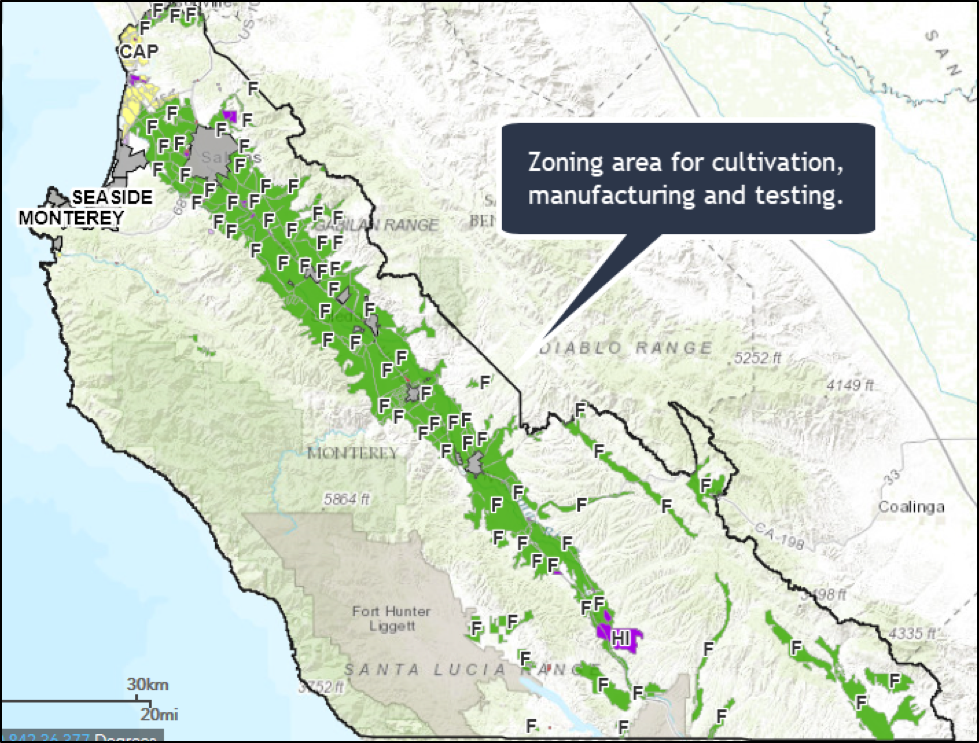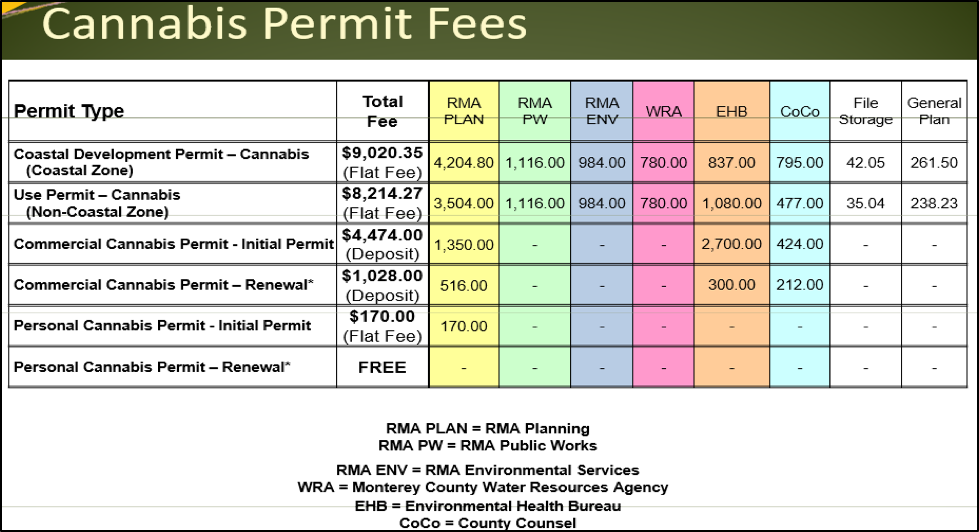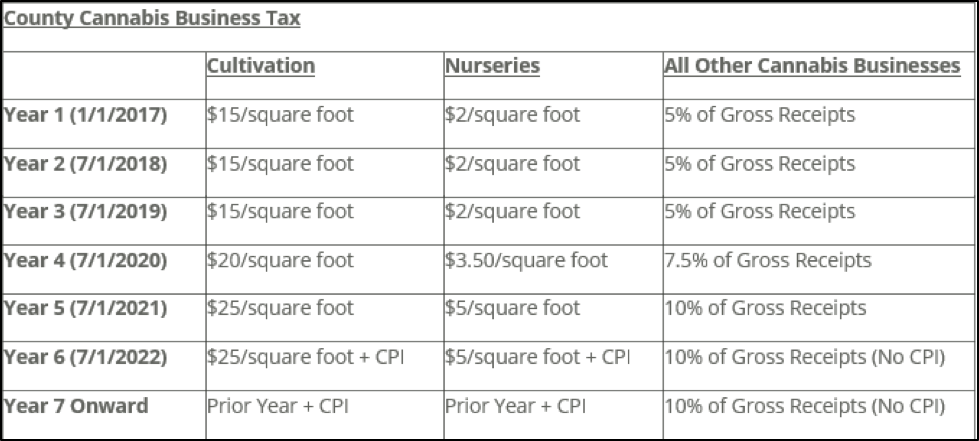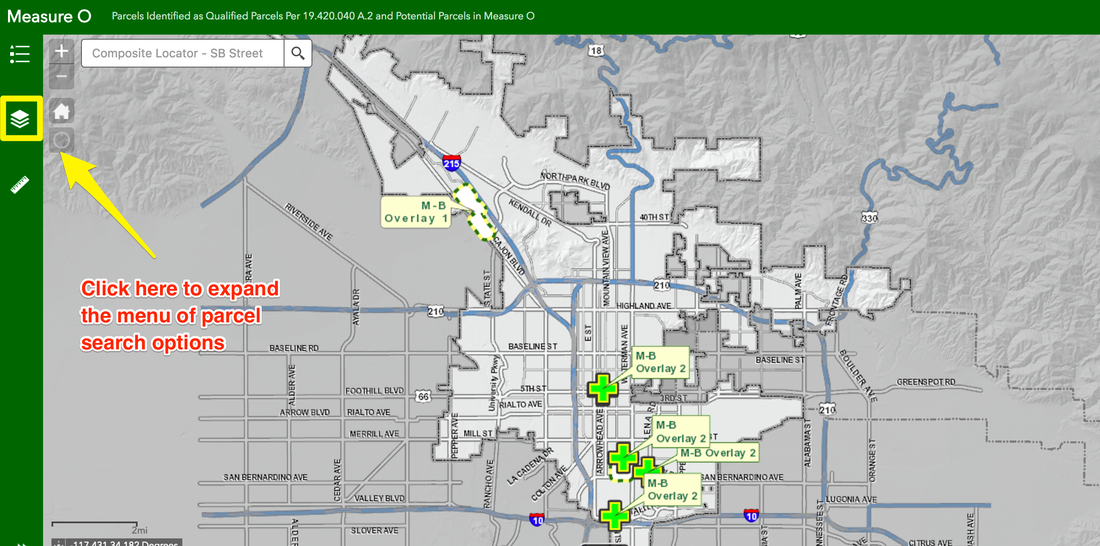|
The Bureau of Cannabis Control (BCC) has, on several occasions, released guidelines regarding required cannabis testing. This means that if you are legally operating a cannabis business, you need to adhere to these guidelines in order to meet state requirements. Per the BCC’s guidelines, there are three categories that cannabis and cannabis products fall under: inhalable cannabis, inhalable cannabis products, and other cannabis and cannabis products. Cannabis Operator Responsibility It is every responsible commercial cannabis business operator’s duty to ensure that all their cannabis and cannabis products are tested, and, if sold, have passed these tests. Cultivators must have their product tested through their distribution partners, and retailers must ensure the products they are selling to the public have passed all quality control tests. Providing the patients and customers with safe, effective, potent, and high-quality cannabis and cannabis products should be every operator’s number one priority. Lifting the stigma of cannabis can be done with responsible cultivation, manufacturing, distribution, sale and administration of safe and effective cannabis and cannabis products. Roll Out Dates Since the roll out date for all legal cannabis facilities and business was January 1, 2018, the BCC provided three phases for various test types that all cannabis and cannabis products must undergo. The first phase covers all cannabis and cannabis products that were harvested and manufactured beginning January 1, 2018. The second phase began on July 1, 2018, and the third phase will begin on December 31, 2018. The third phase will require that all three cannabis and cannabis product categories to undergo the comprehensive battery of tests in order to comply with state regulations. As we come to the end of 2018, please make sure you are compliant with the BCC testing regulations. Since annual state licenses will be the focus of the BCC activity in 2019, we expect little to no changes to their existing testing requirements. Testing Types To recap, the comprehensive battery of cannabis and cannabis product test types have been spread out over three phases as follows: Phase I: January 1, 2018 Cannabinoids Testing Moisture Content Testing Category II Residual Solvents and Processing Chemicals Testing Category I Residual Pesticides Testing Microbial Impurities Testing (A. fumigatus, A. flavus, A. niger, and A. terreus) Microbial Impurities Testing (Escherichia coli and Salmonella spp.) Homogeneity Testing of Edible Cannabis Products Phase II: July 1, 2018 Category I Residual Solvents and Processing Chemicals Testing Category II Residual Pesticides Testing Foreign Material Testing Phase III: December 31, 2018 Terpenoids Testing Mycotoxins Testing Heavy Metals Testing Water Activity Testing of Solid or Semi-Solid Edibles Inhalable Cannabis
Inhalable Cannabis Products
Other Cannabis and Cannabis Products
Failed tests
If your cannabis and/or cannabis products fail to pass the required testing and cannot be remedied, then, according to State Regulations, the entire batch must be destroyed. This obviously has an impact on your bottom line: cutting losses means implementing industry best practices. We recommend you continually engage the services of testing laboratories at fundamentally significant steps in the cultivation and manufacturing process. This could potentially save your cannabis and cannabis products from failing tests and destruction. Compliance Assistance If you are a commercial cannabis operator and need assistance and/or guidance with compliance, contact a team member today. Part of every operator’s responsibility is to meet state regulations and incorporate best industry practices into your operations. Whether you’re a cultivator, manufacturer, retailer or distributor, it’s important to become familiar with California’s Cannabis Track-and-Trace system. Through a platform called Metrc, California state officials can regulate and supervise the cannabis industry. Here are some of the basic things you need to know about this system.
What is the Cannabis Track-and-Trace System? The California Cannabis Track-and-Trace system tracks all commercial cannabis and cannabis products—from cultivation to sale. CCTT is run by the the CalCannabis Cultivation Licensing division of the California Department of Food and Agriculture, which covers tracing cannabis in three different branches: Licensing, Compliance and Enforcement, and Administration. Do I need to know about CCTT? Yes. If you are a licensed cannabis business, you are required to use the CCTT system to record, track and maintain information about your cannabis and cannabis product inventories. CCTT is hosted on a system called Metrc, which is a cloud hosted online reporting tool you can use to maintain information about your cannabis products as they make their way from seed to sale. Why does CCTT exist? Cannabis Track-and-Trace is important for a few reasons:
Basically, Metrc allows the state government to have oversight into the cannabis inventories, maintain quality control, make sure all taxes are being paid correctly, and regulate the transfer of cannabis supplies from cultivator to customer. How do Metrc and CCTT work? Metrc uses two types of tags to keep tabs on cannabis and cannabis products. The two tag categories are Plants and Packages. Plants are are further categorized as either immature or flowering. Immature plants are cannabis plants that are not flowering. Flowering plants are those that have formed a mass of pistils measuring greater than one half inch wide at its widest point. All plants must enter the system through immature plant lots (up to 100 plants/lot). With these lots, up to 100 plants are assigned a Unique Identifier Plant tag. Each immature plant gets a label with the lot UID, while individual flowering plants get a Plant tag. Meanwhile, Packages are created from immature plants, harvest batches, testing lab samples, production batches, and other packages. Any amount of cannabis or cannabis product that may be sold, manufactured or transferred must be placed into one or more packages. Then, each package receives an UID package tag created in Metrc. Make sure that any product that you intend to transfer from one licensee to another has an UID physically attached to the package. What is a unique identifier (UID)? The UID is a unique alphanumeric code or designation used to uniquely identify cannabis and cannabis products on a licensed premises. As an annual licensee, you will be responsible for assigning a CCTT-Metrc nonrepeating UID to each immature lot, flowering plant, and distinct cannabis product. Each UID then keeps track of the cannabis products as they make their way through the supply chain. How will I get my UIDs? And do I have to pay for them? When you’re set up in the Metrc system (more on that in a minute), you’ll be able to order your UIDs through the system. The cost of UIDs is factored into the fee for your state’s cannabis license. How do I use my UIDs? Let’s divide this up once more into UIDs for Plants versus Packages.
What do you need to do now? To get started using Metrc, follow these steps:
For more on how to get started using Metrc, follow the instructions listed in the primer released by the CDFA. If you get stuck or have any questions along the way, reach out to the experts at California Cannabis CPA to get advice. Currently, the City of Desert Hot Springs is accepting applications for temporary marijuana facilities. These temporary options allow facilities in the City Desert Hot Springs to begin operation while the state develops the appropriate regulations for Proposition 64 (Prop 64), the “Control, Regulate and Tax Adult Use of Marijuana Act”.
Proposition 64 was designed to reshape the use and taxes of marijuana in the state including designating specific agencies to regulate and licenses of the marijuana industry in California. As the state works to create licensing procedures that meet the new law by January 1, 2018, cities like Desert Hot Springs have decided to implement temporary processes to cover businesses in the interim. Anyone interested in submitting a temporary marijuana facility application must go through the process outlined below: Step 1: Select A Temporary Facility Option Step 2: Obtain Appropriate Permits Step 3: Submit Application to Initiate the Approval Process _____________________________________________ Step 1: Select A Temporary Facility Option The City of Desert Hot Springs is offering three options for temporary marijuana facilities. Marijuana businesses must determine the best temporary option based on business needs. Below are three options outlined by the City:
Step 2: Obtain Appropriate Permits All marijuana businesses must complete the Marijuana Facility Regulatory Permit application. Marijuana businesses who want to open prior to the state issuing permits will be required to complete a Conditional Use Permit application. This permit covers each of the three options for temporary facilities outlined by the City. Each option has its own requirements, process and fees for a temporary facility approval. The City encourages that businesses seeking temporary facilities meet with the Community Development Director in advance of submitting an application. To schedule an appointment, contact Daniel Porras at (760) 329-6411 or dporras@cityofdhs.org. Step 3: Submit Application to Initiate the Approval Process Each option has its own application process. Since each permit is temporary, the City is requiring that progress is shown on the project once Temporary Certificate of Occupancy has been issued. This progress can be demonstrated by documentation from the developer to the Community Development Director at the City. The Temporary Certificate of Occupancy will become void in 180 days if the project fails to show progress. All fess must be paid in advance. Option 1: Conditional Use Permit To obtain a temporary permit under Option 1, a “noticed” hearing is required with the City’s Planning Commission. The Planning Commission will decide on issuing the temporary permit and the following will be issued upon approval: 1) Temporary Interim Phase; 2) Temporary Certificate of Occupancy; and 3) Temporary Regulatory Permit. The following information should be included in the application:
Application fee: $3,725 Application Approval Timeline: Contact City Staff Option 2: Minor Modification Permit Minor Modification permits require that the marijuana business have City Staff review and approve the permit prior to making the modifications. Applications should include the following information:
Application fee: $245 Application Approval Timeline: 2-3 weeks Option 3: Temporary Permit to the Conditional Use Permit Temporary Permit to the Conditional Use Permits will only be issued for cultivation and manufacturing. Under Option 3, marijuana businesses can a request an extension on temporary facilities. They must make this request 30 days prior to their 180-day permit’s expiration and it must be in sent to the Community Development Director in writing. If the permit expires, the business must remove the additional structures within 30 days. The temporary structure must include the following outlined by the City:
The City requires additional plans required for this type of temporary permit. Those requirements include: Grading Plan showing temporary improvements; Hydrology Report and Soils Report. They also require the following plans:
Application fee: $7,986 plus $40,000 cash deposit (returned up project completion or when site is returned to original condition) Application Approval Timeline: 3-6 weeks Currently the city of Coalinga, CA is accepting applications to obtain a permit for cultivation, processing, extraction, manufacturing, testing, and distribution activities with an approved Conditional Use Permit (CUP) and Regulatory Permit within areas of the City zoned Manufacturing and Business Light (MBL). Anyone interested in operating a Commercial Cannabis business within the City of Coalinga must obtain the following: Step 1: Attend Mandatory Pre-Application Meeting Step 2: Identify Property Zoned Location Suitable for Commercial Cannabis Activity Step 3: Submit Regulatory Permit Application Packet Requirements Obtaining a Commercial Cannabis Permit is a dual submittal process. Application documents must be filed with both the Police Chief and Community Development Department. Cannabis Permit Processing Matrix Step 1: Attend Mandatory Pre-Application Meeting There is a prerequisite of scheduling a mandatory pre-application meeting prior to the submission of an official application package for a Commercial Cannabis Permit. All prospective applicants must schedule a pre-application meeting with the City of Coalinga by contacting Amy Martinez, Community Development Secretary at 559-935-1533 x141. The purpose of the pre-application meeting is to provide a comprehensive review of the application process, the application content, and the expectations of the City as it relates to permitting requirements such as the security plan, floor plan, cannabis operational characteristics, employee permits, licensing fees and taxes, monitoring and compliance, legal documents, etc. Step 2: Identify Property Zoned Location Suitable for Commercial Cannabis Activity According to the City of Coalinga’s Commercial Marijuana Operations Ordinance, all licensed Commercial Marijuana Operations are permitted within the Manufacturing and Business Light Zoning Designations (MBL). Also, in the ordinance is a restriction of 1,800 feet from any currently sited and future sited school (K-12). For more information regarding school siting you can view the attached map that identified locations in town outside that restriction. The following applications for land use will need to be submitted: Additional information on fees and regulations can be found at the following links:
Lands Zoned for Cannabis Operations: Step 3: Submit Regulatory Permit Application Packet Requirements It is of utmost important to the City of Coalinga City Council to regulate the commercial cannabis industry in a manner which takes into consideration the needs of patients and their caregivers while promoting the health, safety and welfare of residents and businesses. It is the responsibility of the Community Development Department and the Police Department to implement the City’s Commercial Cannabis Ordinance (No. 797) and the Medicinal and Adult-Use Cannabis Regulation and Safety Act (MAUCRSA), which was signed into law on June 25, 2017 by the Governor which created a licensing and regulatory framework for both adult use and medicinal cannabis. At this time, the City of Coalinga is accepting permit applications for commercial cannabis cultivation (indoor), manufacturing (volatile/non-volatile, testing, distribution and wholesale nurseries, in accordance with the standards of the Medicinal and Adult-Use Cannabis Regulation and Safety Act (MAUCRSA) and the City’s adopted Commercial Marijuana Operations (CMO) Regulations (Ordinance No. 797). The City’s ordinance does not allow for the licensing of retailers at this time. There is an application fee of $2,000.00 and an employee fee(s) of $400.00 per employee that is due when submitting an official application. The Police Chief will review the entire application package once a completed package along with receipt of paid application fees have been received. The Police Chief will issue a recommendation to the City Council to approve/deny the regulatory permit in accordance with Section 95.128.
There are several Regulatory Permit Application Requirements: Application Checklist
Please contact Sean Brewer, Community Development Director with any questions at 559-935-1533 x 141 or sbrewer@coalinga.com. Currently, the City of Arcata, CA is accepting applications to obtain a permit for Commercial Cannabis Activity permit (CCAP). This application process began April 1, 2016. Anyone interested in a medical cannabis business within the City must go through the process outlined below: Step 1: Identify Permit Type Step 2: Gather Application Information Step 3: Write Operational and Logistical Plans Step 4: Submit Application to Initiate the Approval Process Step 1: Identify Permit Type: There are eight types of permits under the City’s CCAP process defined by the type of medical cannabis business. The following are the permit types: Cultivation (the chart below outlines the cultivation standards), Manufacturer 1 (nonvolatile solvents), Manufacturer 2 (volatile solvents), Testing Laboratory, Dispensary, Distributer, Transporter and Delivery. Cultivation Activities Defined by the Medical Cannabis Regulation and Safety Act (Note: Permits are for specific locations where the business operates, more than one location for the same business will require separate permits) Step 2: Application information: Full Arcata City Applications are available on the city website. The applications must include the following information:
Parking compliant with city regulations should be addressed in the site plan as well.
Step 3: Write Operational and logistical plans: All applications are required to include a full outline regarding how your marijuana business will operate. The following items must be included in your plans:
Other information including proposed activities, average amount of production and source of cannabis must be included in the operations plan.
Security breaches required to addressed as part of the security plan. The Arcata Police Department must be notified within 24 hours of noticing a security breach. In section 6.f of Exhibit A Resolution 167-29, the City defines the following as security breaches:
Step 4: Submit Application to Initiate the Approval Process:
The City of Grover Beach, CA is accepting applications for Commercial Medical Cannabis Business based on city ordinances Ordinance No. 17-05 and Ordinance No. 17-06 as of June 14, 2017. The application deadline for dispensaries has expired however the City is taking applications for Cultivation, Manufacturing, and Testing Laboratories. At this time Grover Beach does NOT allow Recreational Cannabis uses. Contact Information for all Commercial Medical Cannabis Business Related Questions: All Commercial Medical Cannabis Businesses will be required to complete the following steps: Step 1: Determine an Acceptable Location for a Commercial Medical Cannabis Business. Step 2: Complete the application process for a Cannabis Use Permit in the City of Grover Beach, CA. Step 3: Complete the application process for a Commercial Cannabis Permit in the City of Grover Beach, CA. Prior to applying:
Step 1: Determine an Acceptable Location for a Commercial Medical Cannabis Business Grover Beach allows Commercial Medical Cannabis Business in all three industrial zones:
Grover Beach, CA Zoning Map: http://www.grover.org/DocumentCenter/View/2749 All cultivation with storefronts shall be located a minimum of 600 feet from public and private schools grades kindergarten through 12th grade consistent with State law. All commercial cannabis uses shall be located a minimum of 100 feet from the CR2 Zone on the north side of Atlantic City Avenue as measured from the residential lot boundary to the industrial lot boundary. Step 2: Complete the application process for a Cannabis Use Permit in the City of Grover Beach, CA. All Applicants will be required to pay an application deposit that covers the costs acquired by the city when reviewing the Cannabis Use Permit application. The deposit amount will range from $6,000 - $10,000.
If the Cannabis Use permit is approved applicant may submit the application for the Commercial Medical Cannabis Permit Step 3: Complete the application process for a Commercial Cannabis Permit in the City of Grover Beach, CA. Commercial Cannabis Permit Application Checklist Commercial Cannabis Permit Application Fire and Life Safety Requirements The applicant must complete and submit the following:
The application process has officially started in City of Blythe, CA to obtain a Commercial Cannabis Business Permit as of September 18, 2017. Final applications must be received by 4:00 PM on November 17, 2017. The application process has been put in place pursuant to Resolution No. 2017-033. For questions regarding the application process call or visit:
235 North Broadway, Blythe, CA, 92225
Follow these steps to apply for a City of Blythe, CA Commercial Cannabis Business Permit: Step 1: Determine an Acceptable Location for a Commercial Cannabis Business (CCB) Step 2: Complete Criminal History Check (Live Scan) Step 3: Complete and Review the Application Process for a Commercial Cannabis Business (CCB) in the City of Blythe, CA. Prior to applying:
Step 1: Determine an Acceptable Location for a Commercial Cannabis Business (CCB) The application must include the address and a detailed description of the proposed Commercial Cannabis Business location (Note that proof of ownership, or a notarized letter of the owner’s willingness to lease will not be given any additional consideration until Phase 3). The applicant must also describe all sensitive uses described within six hundred (600) feet of the proposed location from the property line of a K-12 school, child daycare center, youth center, parks, places of worship and within 1000 feet of adult day care centers. The CCB must be in the appropriate zoning or have a proposed zone change and meet all the locational requirements as described in BMC Chapter 17.63E and BMC 5.10.290 (o) and BMC 883-17. Blythe Zoning Map: Locations of Commercial Cannabis Business Dispensaries will be permitted as follows:
All other Commercial Cannabis Businesses (other than dispensaries), including those permitted to engage in cultivation, manufacturing, testing, distribution of cannabis and cannabis products will only be permitted if all the following requirements are met:
Applicants will be required to obtain a “Zoning Verification Letter” from the Planner in the Planning Division in City Hall, to ensure that the location proposal the applicant is applying for meets locational requirements prior to submitting their CCB application. Sites with proposed zone changes to an allowed zone will be eligible for an approved zoning verification letter. The review process typically takes approximately ten (10) working days and will cost $122.33 The “Zoning Verification Letter” will need to be included with the application package. Please note the issuance of a “Zoning Verification Letter” does not mean the written evidence of permission given by the City of Blythe or any of its officials to operate a CCB, nor does it not mean “permit” within the meaning of the Permit Streamlining Act, nor does it constitute an entitlement under the Zoning or Building Code. A regulatory permit for regulating a CCB does not constitute a permit that runs with the land on which the CCB is established. Request for Zoning Verification Letters require a written request from the Planning Division and will not be completed over the counter since it may require additional research and review. Step 2: Complete Criminal History Check (Live Scan) City of Blythe Commercial Cannabis Employee/Owner Background Application
Step 3: Complete and Review the Application Process for a Commercial Cannabis Business (CCB) in the City of Blythe, CA. Blythe Commercial Cannabis Application Form Application Procedure Applicants must hand deliver a complete comprehensive and signed copy of the Blythe Commercial Cannabis Business Form, and all attachments along with a flash drive which contains one comprehensive and signed copy of the application in a pdf format, and payment of $3,680 starting on September 18, 2017, the initial application and fee must be received by November 17, 2017. Payment must be made by a certified check, cashier’s check or money order made payable to the City of Blythe. Application Fees are non-refundable. A complete application will consist of the following information:
The City Manager or designee shall administer the following three stage process for the screening and evaluation of Commercial Cannabis Business applications. The process for obtaining approval of a license to operate a Commercial Cannabis Business within Blythe, CA consists of the following three stages: Phase 1: Determination of Eligibility and Application:
All eligible applications will move onto Phase 2. Phase 2: Initial Ranking (1,500 Points) Applicants who scored a minimum of 80% in Phase 2 will move to Phase 3. Applications will be given a score based on the following criteria:
Phase 3: Second Ranking (2,500 Points) Prior to the scheduling of the interviews in Phase 3 each of the applicants will be required to have their proposed site inspected by the assigned City designee to ascertain current conditions of the facility. The second ranking will be scored based on the following criteria: After all the applicants from Phase 3 scores have been tabulated they will be combined with Phase 2 to establish a new ranking of the top applicants. The top applicants for each category as determined by the procedures shall move onto Phase 4 of the selection process for further consideration.
. Phase 4: City Manager’s Recommendations and City Council’s Final Approval This phase will consist of the following:
Please note: After the completion of the application interviews in Phase 3 and prior to the Selection Committees final review and evaluation, the City reserves the right to request and obtain additional information from any candidate who submitted a proposal. Upon the completion of the final review process, the Selection Committee will tabulate its final scores of the all applicants who were interviewed in Phase 3. The City Manager will present to the City Council the final ranking along with his/her recommendation in which the City Council may award up to the amount permitted by the Ordinance or Council Resolution pursuant to BMC Section 5.10.80 The City Council reserves the right to award a lesser number of permits, or to award no permits at all. Only those applicants on the final list will be eligible to be issued a permit from the initial permit process. The top Applicants which are being recommended by the City Manager for consideration to the City Council should be prepared to attend a City Council meeting in Blythe to provide a public presentation before the Mayor and City Council introducing their team and providing an overview of their proposal if requested by the City Manager. Calexico, CA is now accepting applications for Commercial Cannabis Regulatory Permits. Permits are being issued in accordance with Calexico Municipal Code chapter 5.96 and Ordinance 1178. All cities are different in what is required to operate a Commercial Cannabis Business. Guidelines have been put in place to protect the business owners, employees and the community that make up Calexico, CA. Retail cannabis sales within the City of Calexico, CA have been prohibited. The city will issue Commercial Cannabis Regulatory Permits for qualified applications in the following areas:
Steps to complete to obtain a Commercial Cannabis Regulatory Permit in Calexico, CA: Step 1: Review Commercial Cannabis Activity Regulatory Permit Application Checklist. Step 2: Review the Permitted Locations and Standards Step 3: Gather and Prepare Site Plan Supplemental Requirements Step 4: Complete Regulatory Permit Application At first glance these steps seem easy, there are some very detailed information that must be included and reviewed as part of the application. Applicants who are pursuing entry into the Commercial Cannabis Business in Calexico must ensure that they follow their due-diligence to gain the proper permitting. Step 1: Review Commercial Cannabis Activity Regulatory Permit Application Checklist
Step 2: Review the Permitted Locations and Standards The City of Calexico has outlined locations in the city where Commercial Cannabis Businesses can operate. Individuals who are seeking permits should carefully review zoning maps for permitted locations and city standards:
Calexico, Ca Zoning Map: Step 3: Gather and Prepare Site Plan Supplemental Requirements GENERAL INFORMATION MUST BE LISTED ON ALL SHEETS:
INFORMATION SPECIFIC to SITE PLANS (The site plan, drainage and grading plan, and landscape plan may be combined into a single plan as long as the details are legible):
ITEMS SPECIFIC TO PRELIMINARY GRADING AND DRAINAGE PLAN:
ITEMS SPECIFIC TO PRELIMINARY LANDSCAPE PLAN:
INFORMATION SPECIFIC To ELEVATIONS:
Step 4: Complete Regulatory Permit Application The City of Calexico, CA may authorize up to ten applicants per commercial cannabis activity category. The commercial cannabis activity categories permitted are cultivation, manufacture, testing, distribution, and transportation. Prior to initiating operations and as a continuing requisite to operating a commercial cannabis activity, the applicant shall obtain a validly issued CUP or enter into a fully executed development agreement agreed to by the city council. Each applicant may only apply for and operate up to two commercial cannabis activity facilities in the city. There is an application fee to be determined by resolution by the city council, an executed reimbursement agreement on a form provided by the city to fully reimburse the city for all fiscal impacts, costs, expenses, and fees, including but not limited to attorney fees and consultant fees, incurred by the city related to the commercial cannabis activity, and a deposit in an amount as provided for in the reimbursement agreement terms. Carefully review and complete the Commercial Cannabis Activity Regulatory Permit Application The application consists of the following:
As of October 2, 2017, Medical and Recreational Cannabis Businesses can now submit applications in the City of Woodlake, CA. Applications are being accepted in accordance with Woodlake Ordinance No. 611 and within approved zones in accordance with Woodlake Ordinance 612. Woodlake is accepting application for the following Cannabis Businesses:
Anyone interested in operating a medical cannabis business within the City of Woodlake, CA must have a Cannabis Regulatory Permit and must complete the City’s Conditional Use Permit process: Item 1: Complete Background Investigation Packet to Obtain Employee Permit: As part of the application process each applicant will be required to complete the Background Investigation Packet included in the application. Items that need to be completed as part of the packet at the Woodlake Police Department:
As part of the background investigation each owner will be required to submit a list of 5 references. The background Investigation needs to be completed by each owner and each employee. The grounds for denial of an Employee Permit can be one or more of the following:
Item 2: Application and Regulatory Fees for all Cannabis Businesses: There are several fees pertaining to the Cannabis Business Application and all fees must be submitted with the final application. If an application is approved and the business is operational, each business must pay an annual regulatory fee which will be used to monitor and confirm compliance with local and state regulations. Item 3: Acceptable Cannabis Business Locations in Woodlake, CA: Choosing the right location is critical for your business. Information on the facility location will be required when submitting the Woodlake Cannabis Business Application. Here is a list of information that is needed:
City of Woodlake Zoning Map: At a minimum the Cannabis Business location must comply with these building code operational requirements and restrictions:
Item 4: Complete the Specific Cannabis Business Application: DEADLINE November 3rd, 2017 All applications must be submitted in PERSON to the Community Development Department: Jason Waters Community Development Director City of Woodlake 350 N Valencia Ave Woodlake, CA 93286 559-564-8055 For Dispensaries Only the application process will be split into three phases: Phase 1 – Background Phase I requires each applicant to complete the Phase I background materials, which include the attached live scan form and commercial cannabis employee permit application, as well as an indemnification agreement to hold harmless the City of Woodlake. Each applicant will be required to submit to a criminal background investigation. Fingerprints and Photograph shall be required from each applicant as part of this process. Phase 2 – Application Requirements: All applicants must pass the background investigation to move on to Phase 2.
Phase 3 – Application Requirements:
Final Selection: Following an objective ranking of the above application materials, applicants may be invited for interview(s) with City staff and/or representatives. Following completion of the interview(s), City staff intends to bring forward for the City Council’s consideration up to two recommended facility operators. The recommended operator should be prepared to attend a City Council meeting in Woodlake in order to provide a public presentation before the Mayor and City Council introducing their team and providing an overview of their proposal. Currently the County of Monterey, CA is accepting applications to obtain a permit for all medical cannabis activities. This application process started November 9, 2016. Anyone interested in operating a medical cannabis business within the unincorporated area of the county must obtain the following: Step 1: Obtain and maintain a Use Permit/Coastal Development Permit Step 2: Obtain and maintain a Commercial Medical Cannabis Permit Step 3: Obtain and maintain a Business License Step 4: Comply with the self-reporting Commercial Cannabis Business Tax Law Multiple licenses and permits (stacking) Depending on the type of medical cannabis business there are different types of permits and business licenses required. Subject to State restrictions by license type. Chapter 3.5 of Division 8, of the California Business and Professions Code contains limitations on the number and types of licenses that may be held by one licensee. Section 19328 of the Business and Professions code allows a “licensee” to hold a state license in up to two separate license categories (e.g. Cultivation Type 3A and Manufacturing Type 6). Restrictions apply to the types of licenses that can be held at one time. The County may permit multiple cannabis businesses on one parcel (e.g. two or more businesses with separate premises on the same property) subject to Use Permit restrictions, and subject to limitations through future State regulations. Step 1: Obtain and maintain a Use Permit/Coastal Development Permit Cannabis related land use permits will begin with a Development Review Committee (DRC) application. Materials submitted with the application should address those items listed in Section 21.67.100 of the Inland zoning ordinance (Title 21) or Section 20.67.100 of the coastal zoning ordinance (Title 20). Application materials must also address requirements specific to the type of cannabis business activity requested. Cannabis operations must be located in the appropriate zoning district and may not be located within 600 feet of a school, park, or drug recovery facility. Please note: all cultivation must be within an existing warehouse or greenhouse that was legally established before January 1, 2016, and all operations and development must comply with all relevant County land use and development standards. File all applications for a Use Permit for a commercial medical cannabis activity with the Resource Management Agency/Planning on the form. Every application must have the following documentation:
Additional application requirements - The Director of Planning may require additional information depending on the type of Commercial Medical Cannabis activities:
Detailed inland requirements can be found here: https://www.municode.com/library/ca/monterey_county/codes/code_of_ordinances?nodeId=TIT21ZO_CH21.67COMECAAC Step 2: Obtain and maintain a Commercial Medical Cannabis Permit Permit Application File all applications for a commercial medical cannabis permit with the Resource Management Agency/Planning on the form. In all cases the application must have the following documentation:
Application materials for a Commercial Medical Cannabis Permit must contain all of the information required by Section 7.90.050 of the Monterey County Code. Chapter 7.90 can be found here: https://www.municode.com/library/ca/monterey_county/codes/code_of_ordinances?nodeId=TIT7BUTALIRE_CH7.90COMECAPE FEES: The fee for a Commercial Medical Cannabis Permit application is a deposit fee. The County will track time invested on each permit application and refund the amount of the deposit not used or bill the applicant if County costs for processing the permit exceeds the deposit amount. A fee for renewal of a Commercial Medical Cannabis Permit will be due annually. Step 3: Obtain and maintain a Business License If the Board of Supervisors adopts an ordinance establishing Business License requirements, an annual business license will be required. Business Licenses are not issued until all required County approvals (Use Permit/Coastal Development Permit and Commercial Medical Cannabis Permit) and State licenses, when applicable, have been obtained. Fees and application requirements will be established by the Treasurer/Tax Collector for Business Licenses if and when a Business License Ordinance is adopted by the Board of Supervisors and becomes operative.
Step 4: Comply with the self-reporting Commercial Cannabis Business Tax Law Beginning January 1, 2017, anyone engaged in commercial cannabis business activities as described in MCC Section 7.100.030(A) and (B) shall be subject to the annual tax. These activities include cultivating, dispensing, producing, processing, preparing, storing, providing, donating, selling, or distributing cannabis in the unincorporated area of the County. This includes operations currently engaged in commercial cannabis business activities that have not yet obtained the required County permits or state licenses. Anyone engaged in commercial cannabis activities, as stated above, shall immediately self‐report such activities to the Monterey County Resource Management Agency (RMA) ‐ Planning Services using the Treasurer‐Tax Collector’s Commercial Cannabis Business Tax Self Reporting Form. The commercial cannabis business shall disclose the type, nature, location, and size of the cannabis operation. The completed self-reporting form should be emailed to cannabis@co.monterey.ca.us. If mailing hardcopies, please send to: Monterey County RMA c/o Jackie Nickerson, 168 W Alisal, 2nd Floor, Salinas, CA 93901. Commercial Cannabis Business Tax Administrative Rules and Procedures found here: http://www.co.monterey.ca.us/home/showdocument?id=2355
Currently the city of Long Beach, CA is accepting applications for NEW medical marijuana cultivation, lab testing and manufacturing facilities. Beginning 9/1/2017 Long Beach will start accepting distribution applications as well. Applications are accepted on a first come first serve basis Monday-Friday, 7:30 AM – 4:00 PM. The Long Beach Application process is very complex. Individuals should consider hiring assistance to manage, organize, and write the application. Details regarding the specific rules can be found in the Long Beach Municipal Code Chapter 5.90 . At this time, there is no application deadline. Applications should be submitted in-person to: Long Beach City Hall 4th Floor Business License Counter 333 W. Ocean Blvd, Long Beach, CA 90802 7:30 AM – 4:00 PM Individuals seeking to obtain a Medical Marijuana Manufacturing Business License in Long Beach, CA can start by following 4 important steps: (Step 2-4 must be submitted in order). Step 1: Identify an acceptable medical marijuana manufacturing facility location. Step 2: Completing the application for a NEW Medical Marijuana Business License. Step 3: Complete the Manufacturing Supplemental Information Form. Step 4: Develop a Manufacturing Operations Plan. Step 1: Identify an acceptable medical marijuana manufacturing facility location: Applicants identifying an acceptable property should be aware that the Long Beach Marijuana Code 5.90.030 has put forth the following restrictions that must be adhered to:
The Planning Bureau will review the previous and proposed use of the property as well as the parking requirements. The following are required by the Planning Bureau:
Required # OF Parking Spaces: 2 per 1,000 square feet of Gross Floor Area Medical Marijuana Buffer Map: Department Reviews and Inspections:
When applying, applicants will be required to pay an application fee: # of Owners and Business Managers: Application Fees 1: $200.45 2: $345.45 3: $490.45 4: $635.45 5: $780.45 6: $925.45 ***Checks should be made payable to the “City of Long Beach” *** ***Application fees are non-refundable. If applicant is not successful in obtaining a license, a refund may be requested by emailing a completed Refund Request Form to lbbiz@longbeach.gov *** Application Checklist Overview: Medical Marijuana Business License Application (item details found on application).
Live Scan:
License Taxes:
Step 3: Complete the Manufacturing Supplemental Information Form. In addition to the Medical Marijuana Business License Application the Supplemental Information Form will require the following information:
Step 4: Develop a Manufacturing Operations Plan. All medical marijuana manufacturing businesses are required to submit an operating plan. At a minimum, the operating plan must meet the requirements as set forth in LBMC Chapter 5.90. Any statements made in the Operating Plan may not supersede any local and/or state laws, rules, and regulations. For each section of the Operating Plan a cover sheet is required and each section should be clearly labeled. The operating plan must have page numbers in the bottom right hand corner. DO NOT staple or bind the operating plan. You may submit the Medical Marijuana Business License Application and the Manufacturing Operating Plan in a three-ring binder or in an envelope. Both the Medical Marijuana Business License Application and the Manufacturing Operating Plan must be submitted at the same time. The Operating Plan must include the following areas: General Description of Services – a summary of the proposed business model:
Extraction Method – If performing on-site extractions provide a description of the extraction method:
Noxious Chemical Control – It is important to describe what methods will be used to ensure that odor generated inside the manufacturing facility is not detected outside the business premises.
Toxic Material – Provide a description of all toxic, flammable, or other materials that will be used or kept at the medical marijuana business, the location of such materials, and how such materials will be stored. This includes all materials regulated by a federal, State, or local government that would have authority over the business if it was not a marijuana business.
Quality Control – Describe the manufacturing quality control procedures that will be employed by the business to ensure that marijuana products are safe and suitable for human consumption and/or use.
Security - Provide a detailed description of their security plans. The security component should be broken down into operational and facility security categories.
Operational Security - Detail the operational security including but not limited to general security policies for the facility, employee specific policies, training, sample written policies, transactional security, confidential information security, visitor security, 3rd party contractor security, and transportation security.
Facility Security - Applicants should provide a description of the overall facility security.
Digital Video Surveillance - All Medical Marijuana Businesses must install and maintain a fully operational digital video surveillance and camera recording system. The video and surveillance system shall, at a minimum, meet the following requirements:
Any security measures that exceed these standards are highly desirable. Product Tracking and Disposal - Identify how marijuana will be tracked and monitored to prevent diversion and theft.
Product Complaints - Describe policies for receiving, recording and handling product complaints associated with the use of marijuana products provided by the manufacturing facility. Policies may include:
Product Rejection/Recall Describe the steps that the manufacturing facility will take when notified from a testing agency or City Health Official that the tested marijuana product does not meet appropriate health standards.
Fire Plan - Applicants should provide a detailed description of their fire prevention, suppression, alarm and life safety systems.
Employee Safety & Hygiene - Provide a summary of the safety protocols that will be adopted by the manufacturing facility, including, but not limited to: staff training, protective equipment, hazardous material handling, emergency communication/response protocols, etc. Businesses must conform to all Cal OSHA workplace safety standards, specifically Title 8 of the California Code of Regulations.
Community Involvement - Provide a detailed description of their plans to participate in community service within the City of Long Beach.
The citizens of the City of San Bernardino opted to adopt California Proposition 215 (Compassionate Use Act) and starting accepting licenses as of June 5, 2017 for marijuana business permits. This comes well over 6 months after voters approved Measure O, San Bernardino Regulate Marijuana Act of 2016. Measure O stipulates that applicants who wish to submit a Medical Marijuana Business Permit be for a property that is at least 600 feet from residential zones. To equip applicants for cultivation, manufacturing, testing, transportation or distribution, analysis has been completed by the city to best identify the viable business locations. Yet, there is more than just the business type and property location to consider when applying.
There are some pending legal arguments against Measure O, but of the 4 pending only 2 of them are being considered as having any merit. The City will continue to keep you informed of its progress, but feel free to visit the San Bernardino city web site periodically for updates. Step 1: Identify a Permissible Property Location Maps and matrixes are provided by the city of the viable locations approved for cultivation, manufacturing, testing, transportation and distribution. The city refers to the permissible areas as M-B Overlay 1 and M-B Overlay 2. The allowable locations for applicants are not only identified via the additional maps and matrix resources, but each plotted area is assigned an “Assessor Parcel Number” (APN). Of those APN’s note as follows:
It should be noted that an APN # is a requirement as part of the application process, and will need to be reference on the application form. This is in addition to the property address, zoning district, general plan designation and which of the two M-B Overlays the location is listed within.
Step 2: Prepare the Project Information Profile
Applicants must complete the standard Marijuana Business Permit Application as well as provide supplemental information depending on the license type. Prior to submission, it is recommended the Measure O guidelines be fully reviewed, as there are some additional requirements articulated on the requirements of the operating business. General application requirement checklist:
Once the application is approved there are additional permit fees that are at a minimum of $250 annually and an additional $1 per square foot of operating space. Site Plan [1” = 10’] (Quantity of 3 Copies): It should be noted that no marijuana business shall be allowed to operate out of any temporary or portable structure.
Floor Plan [1/4” = 1’] (Quantity of 3 Copies):
Area Map [1” = 50’] (Quantity of 3 Copies):
Business Plan (shall contain a minimum of the following information):
For further details and the application form, go the City of San Bernardino’s web site and their Marijuana Business Permit Application. On the same site, there’s an additional form available for their live scanning capabilities. Marijuana Business Live Scan Form will initiate the Live Scan Fingerprinting services which is a technique used by law enforcement agencies and private Live Scan Service Providers. The technology electronically captures fingerprints (and palm prints at designated agencies) without using ink and/or paper. Since this form is available, applicants should be prepared for the following:
While there are no deadlines, or caps on the number of permits being offered, applicants will see limits based on available real estate. Early preservation of compliant properties will be key to obtaining permitting in the City of San Bernardino along with the appropriate prerequisites through the state and background check approvals. Contact Info: Applicants can sign up to receive email updates regarding the implementation process and status by contacting Stephanie Sanchez at Sanchez_Stephanie@SBCity.org or 909-384-7272 x.3343. Application questions should be directed to Planning Division Associate Planner Travis Martin at Martin_Tr@SBCity.org or 909-384-5313 inclusive of questions on application fees. Other City Resources: City Council Resolution 2016-177 Measure O full text initiative packet Measure O Interactive Map County of San Bernardino Elections Office of the Registrar of Voters election results Santa Rosa is accepting medical cannabis applications for Cultivation, Distribution, Manufacturing, Testing, and Transporting businesses. Dispensary applications are not being accepted. There is no limit on how many licenses will be offered. Rather, Santa Rosa is using the availability of real estate as the method to cap the market.
To provide a status on medical marijuana businesses, the Santa Rosa Planning and Economic Development Committee published the Cannabis Permitting Update. This report tracks the number of new medical cannabis businesses in Santa Rosa. Highlights of the report includes the following items:
For those who are looking to gain entrance into the Cannabis Industry, this city is an excellent place to secure a foothold in due to their friendly approach to marijuana businesses. The City of Santa Rosa is a leader in marijuana regulations allowing for an open market – due to these factors it is likely that in years to come, they will become a hub in the marijuana industry. There are 3 steps to start your Cannabis Business in Santa Rosa.
Step 1: Find an Open Parcel that Meets Zoning Requirements Despite low vacancy rates, Testing Labs may find opportunities to find real estate in the CO – Office Commercial Zone and Business Park. Distributors or Manufacturers can apply for permitting in the Business Park, Light Industrial Zone, or the General Industrial Zone. Applicants should avoid the Limited Light Industrial (-LIL) Combining District for medical cannabis commercial cultivation because Santa Rosa recently adopted an urgency which imposes a temporary moratorium in this district. Full details regarding which license types can operate in each zone be found in the Medical Cannabis Land Use Policy Chart . This contains a matrix which contains a matrix of license by zone. Applicants can also use a visual reference with the Map of Areas Zoned General Industry, Light Industry, Business Park, and Office Commercial. More details regarding zoning can be found on the city website under Commercial Cannabis Resources. Step 2: Submit to the City a Conditional Use Permit If you are able to find an open parcel that meets the criteria, the next steps to obtain cannabis permitting would be to file for a Conditional Use Permit. Businesses that are less than 10,000 square feet will submit for a Minor Permit with a fee of $2,511 and business that are more than 10,000 square feet will submit for a Major Permit with a fee of $10,964. In addition to the fees, when submitting the CUP application, you must include the following:
For new construction, you must submit the following additional information:
Step 3: Apply for a Building Permit In parallel with the CUP submission, applicants must apply for a building permit. Applicants must adhere to the regulations of the City of Santa Rosa Building and Fire Division Requirements to gain approval and pass the inspection of medical marijuana-related occupancies. Information regarding the Building Code Requirements, Accessibility Requirements, Fire Code Requirements, Electrical Code Requirements, Mechanical Code Requirements, Plumbing Code Requirements, Energy Code Requirements, and CalGreen Code Requirements can be found in the City of Santa Rosa Building and Fire Division Requirements. Below are the General Requirements and Medical Marijuana Regulation and Safety Act Permit Specific Requirements. General Requirements
The requirements in this section are related to specific permit types as outlined in the California State Medical Marijuana Regulation and Safety Act (MMRSA) Cultivation Facilities (MMRSA permit types 1-4) – Annual Fire Department Operational Permit Required
Manufacturer Facility (MMRSA permit type 6-7) – Annual Fire Department Operational Permit Required
Testing/Laboratory (MMRSA permit type 8) – Annual Fire Department Operational Permit Required
Distributor (MMRSA permit type 11) - Annual Fire Department Operational Permit Required Type 11 Distributor facilities are to meet CBC, Chapter 3 requirements based upon Use and Occupancy Classification for a Storage Group, S, Occupancy. CBC § 311.1.
Transporter (MMRSA permit type 12) Type 12 Transporter facilities are to meet CBC, Chapter 3 requirements based upon Use and Occupancy Classification for a Storage Group, S-1, and/or Business Group, B, Occupancy. CBC § 311.1.
The City of Santa Rosa is paving the way to become a fully regulated and open cannabis market. For those who are seeking more information, the ordinance can be found in Chapter 10-40 of the City Code and applicants can reference the Medical Cannabis FAQ’s published by the city. |

